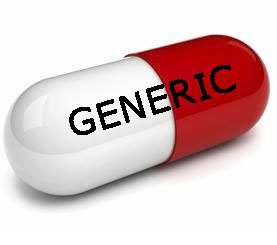Posts Tagged ‘ Product Liability ’
How Generic Drugs Discriminate Against the Poorest Patients
April 10th, 2012. By AbiK
 No one wants to come right out and say it, but that’s basically what’s going on with generic drugs. Poor patients are effectively discriminated against simply by having no choice other than to buy the cheapest version of whatever pill they’ve been prescribed. Cheaper meds are fine—until you factor in that the more expensive brand name equivalents come with a bit of an extra ‘insurance policy’—no, not the type of insurance you’re thinking of—it’s insurance in the sense of legal recourse should something go wrong as a result of taking the drug.
No one wants to come right out and say it, but that’s basically what’s going on with generic drugs. Poor patients are effectively discriminated against simply by having no choice other than to buy the cheapest version of whatever pill they’ve been prescribed. Cheaper meds are fine—until you factor in that the more expensive brand name equivalents come with a bit of an extra ‘insurance policy’—no, not the type of insurance you’re thinking of—it’s insurance in the sense of legal recourse should something go wrong as a result of taking the drug.
Let’s face it, outside of those who claim to buy the cheaper equivalent on ‘principle’, for the most part the folks who are buying generics are those who either simply cannot afford the brand-name drug or those who’ll lose prescription coverage benefits unless they opt for the generic shown on the approved formulary from their insurance company. We’re not talking the 1% here, folks.
Sure, it’s great that cheaper generic versions of big-name blockbuster drugs are available—we’d all be broke otherwise. But generics have a hidden cost, too…
Legally speaking, that cost can be tremendous. How so? Well, what if something goes wrong—horribly wrong—upon taking the drug? What if there’s a serious reaction to the drug, like a ruptured tendon from a fluoroquinolone? Or tardive dyskinesia from a ‘good as Reglan’ generic? Sure, the generic drug should in most instances perform like its pricier twin—but there’s a catch: unlike with brand name drugs, if something goes wrong, there’s not much legally at present that can be done (from a strict product liability standpoint—not talking malpractice here).
The issue with generic drugs has to do with liability—being liable when harmful side effects occur. And simply put, generic manufacturers are not held liable.
Currently, it’s the brand name drug manufacturers who are responsible for ensuring their drug has gone through a rigorous FDA-approval process and they’re also responsible for making any label changes should new warnings be applied to a drug they’ve produced.
Generic manufacturers, however, don’t have quite the same responsibility. The Hatch-Waxman Act—officially, the Drug Price Competition and Patent Term Restoration Act of 1984—made it easier for generics to find their way to market. Generic drugs do not have to go through a lengthy FDA approval process if they’re able to prove that the generic drug is equivalent to the brand name version. And, as such, the generic drug simply picks up the labelling information and package insert information from the brand name drug. When any changes are necessary (e.g., adding a black box warning), the generic is required to duplicate what’s happened with the brand name drug.
The most significant benefit of the Hatch-Waxman Act for blockbuster brand name drug manufacturers is that it allows the big pharma companies a period of exclusivity in the marketplace before the generic drug enters the market.
Now, the difference between a drug liability lawsuit for a generic vs a brand name is most glaring when you look at lawsuit outcomes. One of the most publicized examples showing the difference between a brand name drug lawsuit and a lawsuit with the same, but generic, drug involves phenergan.
In both cases the plaintiffs—both women who were administered the anti-nausea drug in a hospital and then subsequently lost an arm due to gangrene—sued the drug manufacturers. In the brand-name case, it was v. Wyeth; in the other, the generic, it was v. Baxter Healthcare. The upshot was that the plaintiff who had the ‘good fortune’ to have been given the brand name version received a multi-million dollar settlement. The generic patient? Her lawsuit against Baxter was dismissed. She had also filed a malpractice lawsuit, the final terms of which were undisclosed.
Both women had life-altering injuries; only one received settlement money from the drug manufacturer.
While the phenergan lawsuits began in a hospital setting where the choice of brand name or generic may not have been the patients’ to make, the outcomes of their lawsuits show the stark difference in terms of liability claims. And, for patients who simply cannot afford to choose a brand-name drug, choosing the generic becomes a more or less de facto decision to give up the right to sue the drug company. And in that sense, generic drugs do discriminate against the poorest patients.
Comfy UGG boots may lead to foot problems
March 15th, 2010. By AbiK
 Remember when UGG’s first hit American shores? And you saw people like Pamela Anderson (Lee or Not-to-Lee?) wearing them in LA—even on the beach? And you were wondering why the heck someone needed boots that looked like they belonged in an igloo in 80-degree heat? And you’re still wondering—except now you realize they’re “like slippers you can wear anywhere!”—and people do wear them anywhere.
Remember when UGG’s first hit American shores? And you saw people like Pamela Anderson (Lee or Not-to-Lee?) wearing them in LA—even on the beach? And you were wondering why the heck someone needed boots that looked like they belonged in an igloo in 80-degree heat? And you’re still wondering—except now you realize they’re “like slippers you can wear anywhere!”—and people do wear them anywhere.
Because OMG they’re so comfortable! And fashion be damned—if Pamela, Miley, Reese, Jessica, Megan and Eva wear them (thank you coolspotters.com)—well, that’s the only testimonial anyone needs, right?
So here’s a testimonial that appeared in the Telegraph (UK) today that wasn’t exactly too fashion-friendly—it’s some commentary from Dr. Ian Drysdale on the ever-popular UGG boots and it ought to give some parents pause when considering whether to succumb to the wear-’em-to-school-cause-they’re-cool trend for their daughters. Dr. Drysdale, by the way, is head of the British College of Osteopathic Medicine.
Here’s the Telegraph headline:
Ugg-style boots “damage feet due to lack of support”
It seems that UK podiatrists and chiropadists believe that UGG’s and there omnipresent knock-offs are leading to a rise in the number of people having pain in their feet and knees.
According to Dr. Drysdale, because the foot does not get the proper support on the inside, it will lead to more ankle, knee, hip and back problems. He goes on to say, “These boots are not designed for outside wear. Just because something becomes a trend or fashionable doesn’t mean it’s good or right.”
Amen (non-religiously, of course) to that.
What it comes down to is that this style of UGG boot is basically a glorified slipper—like someone took some classic Read the rest of this entry »
Archive by Category
- Accidents (24)
- Airlines (9)
- Asbestos Mesothelioma (262)
- Automotive (25)
- Celebrity (14)
- Class Action (84)
- Complaints/Comments (15)
- Consumer Fraud (84)
- Contest (2)
- Court of Public Opinion (5)
- Crazy Sh*t Lawyers See (61)
- Criminal Law (4)
- Defective Products (111)
- DePuy ASR Hip Recall (2)
- Discrimination (22)
- Drugs/Medical (248)
- Elder Care Abuse (4)
- Emerging Issues (462)
- Employment (54)
- Environment (52)
- Financial (28)
- Food Illness (15)
- Human/Civil Rights (4)
- Insecurities (5)
- Insurance (16)
- Intellectual Property (16)
- Internet/E-commerce (19)
- lawsuits (161)
- Lawyers (20)
- Lawyers Giving Back (43)
- Lex Levity (10)
- Personal Injury (106)
- Pleading Ignorance (53)
- Real Estate (2)
- Recall (6)
- Scam (3)
- Securities (13)
- Settlement (81)
- Tort Reform (2)
- Totally Tortelicious (81)
- Veterans (11)
- Whistleblower (9)